The national symposium of COC+R (University-led Regional Revitalization Human Resource Education Program Establishment Project) was held on Saturday, February 2024, 2 at Shinshu University Nagano (Engineering) Campus. This project, which is being carried out in five-year intervals, has completed four years and only one year remains. Students from each of the selected projects also took to the stage at this symposium to report on the achievements and challenges of their educational programs to date. Discussions were held about what would emerge from the linking of learning across boundaries, as well as future initiatives.
How to proceed with the exit strategy of local employment
The venue was Shinshu University Nagano (Engineering) Campus. More than 130 participants gathered. The event began with an opening greeting from Shinshu University President Soichiro Nakamura. As the theme suggests, this conference will become a place for sharing "beyond boundaries," and will emphasize that wide-area co-creation and collaboration between industry, academia, and government are essential in order to lead to a prosperous future.As people change, society changes, and universities... I mentioned the importance of taking the initiative to change.
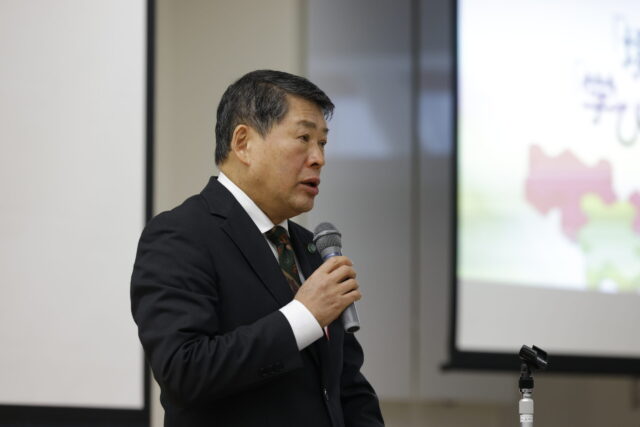
Next, the guest of honor, Mr. Akira Ishibashi, Director of the Lifelong Learning Promotion Division, Comprehensive Educational Policy Bureau, Ministry of Education, Culture, Sports, Science and Technology, gave an opening speech. While revisiting the history of the COC project and the meaning of the "R", he concluded that he was looking forward to hearing the actual voices of students based on themes that transcend boundaries and connect through learning.
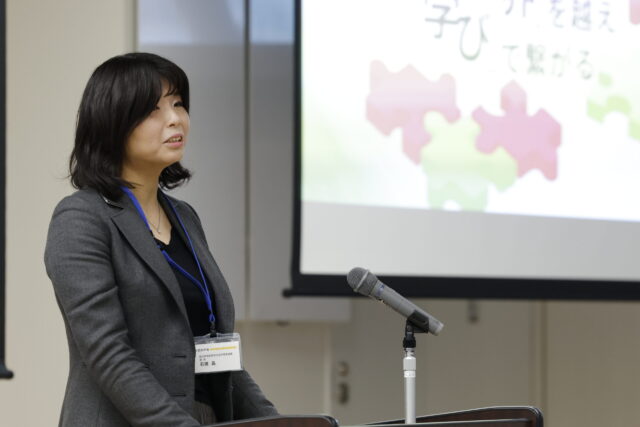
Shinshu University Specially Appointed Professor Shunsuke Yano then explained the purpose of this symposium. We have created a causal model for the exit of local employment, but this time we will share the results and challenges of the program and clarify the factors that local universities should work on to increase the number of local employment. talked. Furthermore, students were included as panelists in the panel discussion, and they talked about how they can expect more meaningful discussions and will continue to consider future connections, conveying to the participants the flow of connections that transcend boundaries.
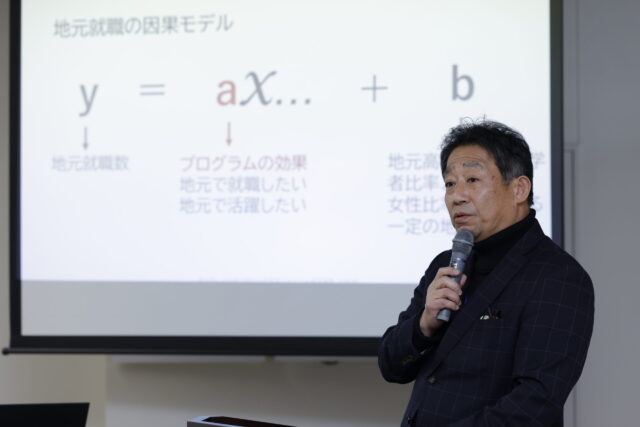
Keynote speech: Studying abroad on an island that is the gateway to the world, and how to make it an exciting university
This year's keynote speech was given by Tomoyuki Mizutani, director and chairman of the Platform for the Attractiveness of Regions and Education, a general incorporated foundation. He is a management assistant at Okishimae Prefectural High School in Ama Town, Shimane Prefecture. The high school was on the verge of closing due to population decline, but by attracting "international students" from the city and overseas, the high school was able to attract 1 times as many applicants to its capacity of 60 students per grade. They turned the entire island into a university-like place for exploration and learning, and turned it into an entity chosen by young people from outside.
Regarding the nature of high school-university collaboration, he also emphasized the importance of conveying the appeal of universities to high school students and fostering a sense of excitement, and of expanding horizontally from universities to other universities, companies, and government. It was a very persuasive lecture, backed by the spread of ``Regional Future Study Abroad'' across the country and his experience and achievements in the field.
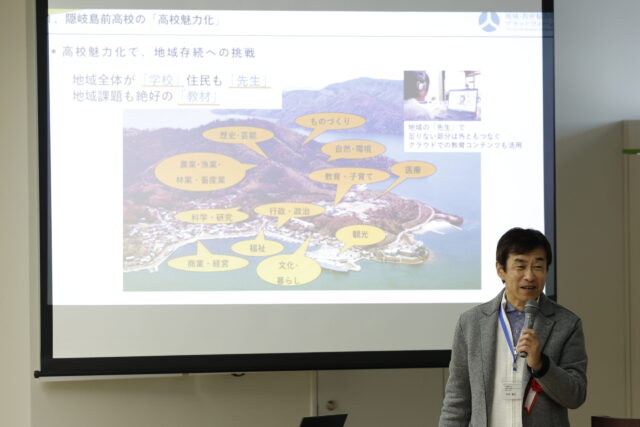
Panel discussion: Changing views on employment and “linking learning” from a student perspective
The panel discussion was held in two parts.
Part 1 was facilitated by specially appointed professor Masayuki Suetomi of Shinshu University, and the panelists were students from four universities who actually participated in the COC+R project. Each of them presented graphs of their intentions regarding local employment before enrollment, before taking the course, after taking the course, and at the current stage. I explained in my own voice why this was the case, what changes had occurred, how I should think about it from now on, and the changes in my consciousness. From these findings, we extracted the factors that influenced them, and Mr. Suetomi added comments and discussed the results of COC+R.
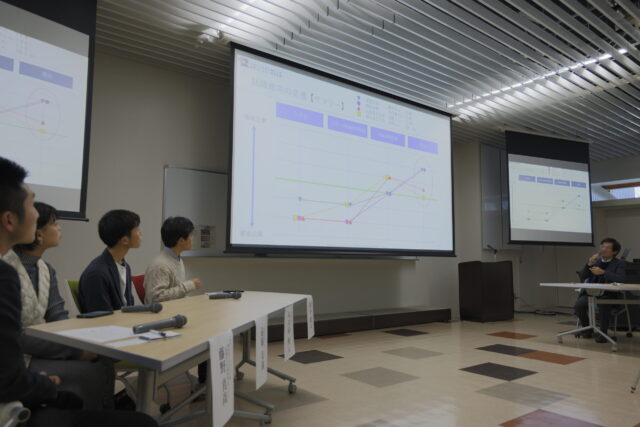
The second session was facilitated by specially appointed professor Mikio Yamamoto of Shinshu University, and was a discussion between two people who are involved in area coordination in the private sector and two professors who are promoting COC+R at their universities. They each developed their own theories about the vertical connections from local elementary and junior high schools to universities, and the horizontal connections that extend from universities to other regions and the public and private sectors. In addition, we will explain with actual examples how to bring high school students into local universities, how adults should communicate with each other, and the relationship between work conditions unique to local areas and growth speed. Each of them talked about their thoughts on ``crossing boundaries.''
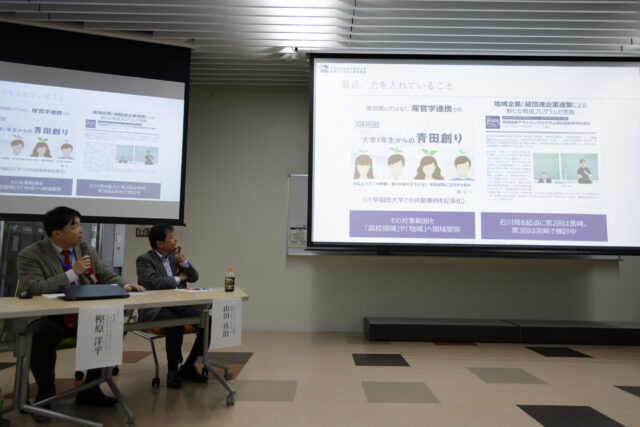
What kind of effects does the ENGINE program have?
Next, Assistant Professor Naoko Nishio of the Shinshu University Career Education and Support Center gave a report on the COC+R project. The sample was the ENGINE Program, which is run as a collaborative project between three universities, with Shinshu University serving as the executive school. We analyzed student questionnaires regarding this and extracted factors for a causal model on how to increase regional employment rates. Six factors were identified, including company (opportunity), company (recognition), and timing of employment, and were found to be highly correlated with improvements in company recognition and attractiveness. It has become clear that contributing to the community, such as corporate value, innovation, and SDGs, are important factors in improving the attractiveness of a region, and that these factors increase students' awareness of local employment.
Employment awareness is fostered by opportunities for self-growth, the social value of companies, and the richness of local life, and the numbers show that the ENGINE program is working effectively. Ta.
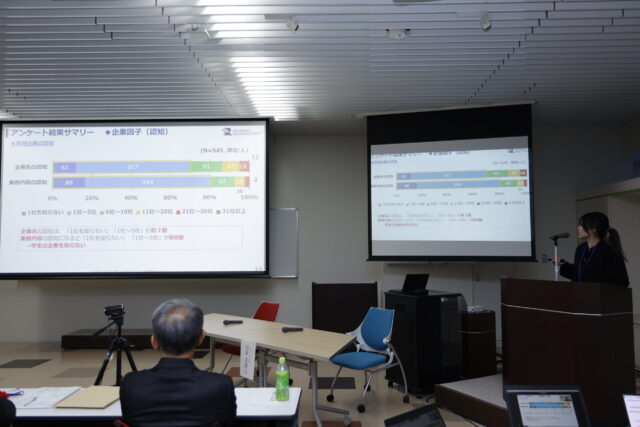
Finally, Shinshu University Vice President Yasuto Hayashi gave the closing address. This year's theme, ``boundary,'' can be translated into the word ``wall,'' and it takes energy to cross it. But beyond that, there must be a world you've never seen before. It is important to ``connect'', which means holding hands, to share values, and to overcome this problem. Rather than unnecessarily increasing the permanent population, COC+R provides a place to increase the number of people who are connected to and love the local area. I concluded that I would like to spend my last year working hard to connect through learning and create excitement about university.
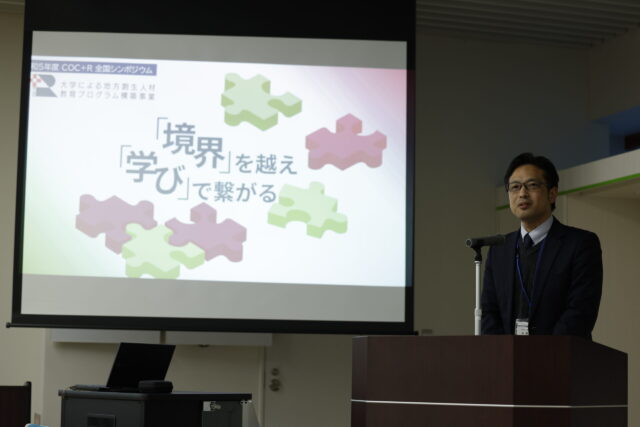
There is only one year left in COC+R. Through the self-driving of the business beyond the exit, everyone involved will have renewed their thoughts and resolve towards the goal of regional cooperation and regional revitalization.
You can check the symposium videos and project reports on the COC+R project official website.
COC+R official website

